Minimalist Shoes for Kids – It’s Time to Set Some Rumors Straight
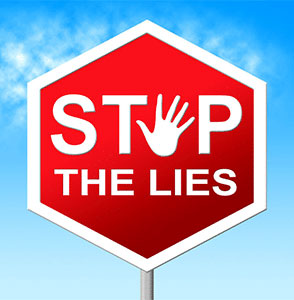
It’s 2023 and the debate on whether children should wear minimalist or supportive shoes is stronger than ever. Should kids wear sneakers that imitate their feet being barefoot or should they wear sneakers that provide support? The type of shoes that children should wear is a discussion that has been up for debate for many years. There are valuable arguments and different sorts of views and actual evidence to support both claims.
One claim that minimalist shoe supporters stand by is that our ancestors didn’t wear supportive shoes. What they fail to address is that all of our barefoot ancestors did not walk, run, or jump on smooth flat concrete or slippery tile. Advances in technology have also led us to live healthier lives.
Parents need to understand that the feet are the foundation for the entire body. The bones of the foot take around 18 years to fully develop and harden; hence it is imperative to get good shoes early on to allow the foot to develop properly. This article will focus on supportive shoes and their advantages while also stating the key misconceptions about minimalist shoes for kids.
Families with children with foot issues often get referred by physical/occupational therapists and pediatricians who normally recommend fitting those kids in more substantial shoes.
What Is the Main Purpose of Wearing Shoes?
Many people believe that the main purpose of shoes is to protect the foot from injury and infection, but shoes do so much more than that! Let’s take a look at some of the features that a good pair of supportive shoes provide:
1️⃣ Help relieve the stress and impact that children impose on their feet and legs when running, jumping and playing.
2️⃣ Prevent injuries by supporting and protecting the feet.
3️⃣ Realign your kids’ body posture by helping them walk and run straighter.
4️⃣ Improve the child’s stability.
I believe that kids should wear good supportive shoes that are lightweight and flexible at the same time since they have active lives that exert an enormous amount of stress on their feet and legs. Minimalist shoes don’t provide any support, they imitate being barefoot, and provide no cushioning every time your child’s feet strike the ground.
Why would someone put their child in a shoe that provides minimal support and structure?
Let’s find out!
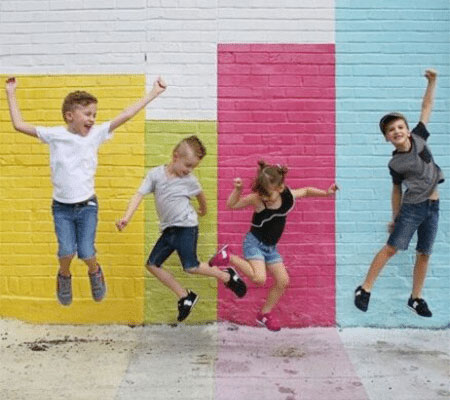
The 3 Main Claims of Minimalist Supporters – Why They are Wrong!
1️⃣ Individuals who support wearing minimalist shoes are right about only one thing: kids are encouraged to wear shoes that imitate being barefoot. What they fail to say is that this only applies to a child that is learning how to walk.
As soon as children begin to walk and start putting pressure on their feet, it’s time for these children to wear a more substantial shoe, since they will be putting more pressure and stress on their feet. Remember that your kids’ feet are the foundation for their entire bodies!
2️⃣ The statement that companies promoting minimalist shoes are growing by the minute is false, at least when it comes to kids’ footwear. I also find it ironic how they complain about how much money these shoe companies make when minimalist shoes are not the cheaper option since they tend to cost even more than regular shoes.
3️⃣ Minimalist shoe supporters believe that without a good selection of minimalist shoes, “children will be forced to wear large, overly cushioned, supportive shoes that weaken their feet, and that those children will grow into adults with weak, injury-prone feet.” Several shoe companies tried offering minimalist shoes for kids but there wasn’t enough demand for them.
Should Children with Foot or Leg Pain Wear Minimalist Supportive Shoes?
When children are experiencing foot pain, the pediatrician or physical therapist will normally recommend more of a shoe (supportive), not less (minimalist). This will help the child walk straighter, and it has been proven that it will reduce or fully eliminate the pain away —I have helped hundreds of children whose feet and leg pain are relieved after fitting them in a good supportive shoe.
Could you please then explain to me how good supportive shoes weaken the feet and make the foot more prone to injuries? Supportive shoes simply provide the child structural support which is not going to take away from the musculature. We are not making the muscles weak.
Good supportive shoes will actually strengthen your kids’ feet and legs. Why do you think that a child who is flat-footed and is experiencing foot or leg pain needs to wear supportive shoes? Because wearing a good, supportive shoe allow the child to walk straighter and relieve muscle pain by redistributing body balance.
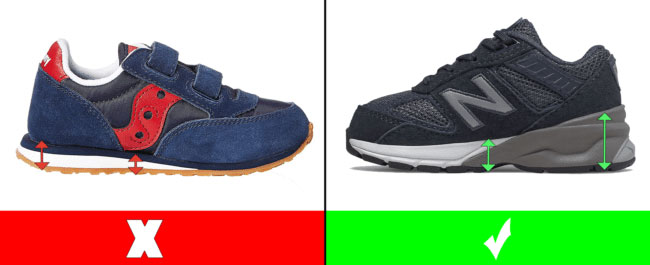
The minimalist shoe supporters always claim that they are not influenced by marketing claims or trends when it comes to good supportive footwear. These are not claims or trends folks, good supportive shoes are the best type of footwear for your children’s feet!
How to Choose the Correct Pair of Shoes for Your Child? – Get It Right!
Certain guidelines must be followed when choosing shoes for your kids to ensure proper and healthy foot development. Following these guidelines helps to ensure that your child’s feet and legs stay healthy through the coming years:
1- Price is not an indicator of quality. All good athletic shoes need to offer plenty of support and cushioning but they need to be lightweight and flexible at the same time. Shoes should be supportive across the middle, but they should always bend at the ball of the foot. Athletic sneakers should be comfortable before your child walks out of the store, there shouldn’t be any “breaking-in” time required for comfort.
2- According to APMA’s survey, sports are the main cause of foot pain in teenagers. Seventy-five percent of high school students play a school or a recreational sport, and nearly 40 percent of that group has injured their feet while playing, according to the survey.
Parents should always purchase sport-specific shoes if they are required by their coach or if the child is playing at a competitive level. Different sports require different shoes, and choosing one made specifically for that sport will prevent injury and help your kids perform at their best. It is important to research a store that specializes in athletic footwear and have the shoe fitted professionally.
Do you want to know what are the top 5 shoe brands for children? Find out now.
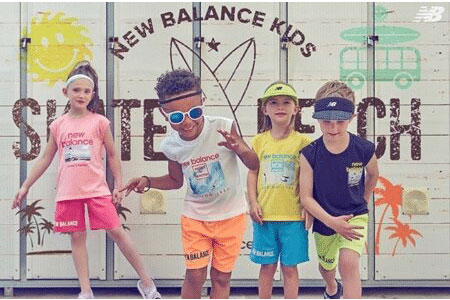
What Medical Professionals and Organizations are Saying…
1- The president of the American Academy of Podiatric Sports Medicine (AAPSM) David Davidson was asked about children’s footwear by Running Times Magazine, and said, “kids should not be running in minimalist footwear at all and they should be wearing brand name running shoes with good motion control, cushioning, etc…”
2- Dr. Lieberman demonstrated very well in his paper, Nature (Jan, 2010) that footwear can have a large influence on natural gait. Hence, parents should be careful to choose good supportive shoes that allow proper foot development for their kids.
3- This APMA (American Podiatric Medical Association) parent flyer states that parents should select a shoe that is rigid in the middle. This will support the arch of the child’s foot to ensure proper foot development. A challenger of this APMA declaration simply conceded, claiming that there were no good studies to refute this.
What then is this buzz amidst minimalist shoe supporters, when the majority of what they claim is baseless?
APMA was founded in 1912 and, with a network of podiatrists across the United States, has become a leading resource on foot and ankle health information. Did you know that APMA put each kids’ shoe through a rigorous evaluation process, analyzing function, flexibility, and the quality of the materials?
I came across one blog from an individual who is an avid supporter of minimalist shoes and states: “As a parent and physician I believe that the APMA statements could cause harm in a developing child’s foot. An example of deformation we see now in many high school runners is hallux valgus (big toes pointed in).
Hallux valgus, or a bunion, is generally caused by ill-fitting shoes with a pointed toe box”. Though he is correct in saying that hallux valgus is caused by shoes that do not fit properly, there is a big difference between shoes that do not fit properly and supportive shoes.
I want to clarify that the medical establishment has never recognized that a child’s foot is best off when it is provided with a less supportive shoe.

I am on my feet all day when I am at work at the children’s shoe store, and I must wear good supportive shoes or I begin feeling pain in my feet and knees. Of course, this will not be the case for everyone since it will depend on each individual foot anatomy, but I am a firm believer in good supportive shoes since I have seen and experienced the positive impact that supportive shoes can provide.
Below you can find a selection of the best kids’ shoes that I have fitted before. These shoes can fit a child with medium (M), wide (W), or extra wide (XW) feet, as long as you choose the correct shoe width. Disclosure: Some links in this post may be affiliate links and we may receive a small commission (at no extra cost to you) when you click our links and make purchases.
The Best Shoes for Kids
Toddler Shoe Sizes (0 to 10)
- Shoe style RaveRun by New Balance
- Available in medium, wide and extra wide widths
- Oversized opening for easy on and off
- Lightweight injection-molded EVA foam midsole provides lightweight cushioning
- Hook and loop closure
- Order this shoe a whole size larger than your toddler’s current foot size
- Shoe style RaveRun by New Balance
- Available in medium, wide and extra wide widths
- Oversized opening for easy on and off
- Lightweight injection-molded EVA foam midsole provides lightweight cushioning
- Hook and loop closure
- Order this shoe a whole size larger than your toddler’s current foot size
- Shoe style Original Jazz Lite 2.0 by Saucony
- Available in medium and wide widths
- Velcro closure
- Leather and mesh upper for durability and breathability
- APMA Certified
- Traction pods on the outsole for serious grip
- EVA midsole for lightweight feel
- Order this shoe a whole size larger than your toddler’s current foot size
- Shoe style Ride 10 Jr by Saucony
- Available in medium, wide, and extra wide widths
- Velcro closure
- Leather and mesh upper
- Non-marking traction pods to help improve stability
- APMA approved
- Toe cap for extra durability
- Order this shoe a whole size larger than your toddler’s current foot size
- Shoe style 2510 by Tsukihoshi
- Fits medium and wide feet (fits high insteps)
- Velcro closure
- Removable insoles
- Lightweight and flexible
- Extra wide toe box allows natural splaying of toes for better balance, comfort, and foot health
- Long heel counter provides stability
- Machine washable
- Order this shoe the same size as your toddler’s current foot size (shoe fits long)
- Shoe style 2510 by Tsukihoshi
- Fits medium and wide feet (fits high insteps)
- Velcro closure
- Heel stabilizer provides lateral stability
- Removable insoles
- The insoles are Infused with natural Green Tea extract (no chemicals)
- Machine washable
- Order this shoe the same size as your toddler’s current foot size (shoe fits long)
- New Balance shoe style Fresh Foam 650
- Fits children with medium, wide, or extra wide feet
- Velcro closure
- Leather and mesh upper
- Mesh collar and tongue are padded with foam for a great fit and added comfort
- Extra deep
- Order this shoe a whole size larger than your toddler’s current foot size
- Shoe style 574 by New Balance
- Available in medium, wide, and extra wide widths (fits high insteps)
- Velcro closure
- Oversized opening for easy on and off
- Fresh Foam midsole cushioning is precision engineered to deliver an ultra-cushioned, lightweight ride
- Order this shoe a whole size larger than your toddler’s current foot size
- Shoe style Fresh Foam by New Balance
- Available in medium, wide and extra wide widths
- Oversized opening for easy on and off
- Lightweight injection-molded EVA foam midsole provides lightweight cushioning
- Hook and loop closure
- Order this shoe a whole size larger than your toddler’s current foot size
- Shoe style Sr Thompson by Stride Rite
- Available in medium and wide widths (fits high insteps)
- Velcro closure
- Ortholite memory foam footbeds
- Opens super wide which makes in and out easy
- Recycled material linings to help reduce odor
- Order this shoe half a size larger than your toddler’s current foot size
- Shoe style SRT Winslow by Stride Rite
- Available in medium and wide widths (fits high insteps)
- Velcro closure
- Toe cap reinforcement and bumptoe protection against stumbles
- Opens super wide which makes in and out easy
- Step-stabilizing design with comfy Ortholite memory foam footbeds
- Order this shoe half a size larger than your toddler’s current foot size
- Shoe style Fresh 574 by New Balance
- Available in medium, wide and extra wide widths
- Oversized opening for easy on and off
- No-sew overlays
- Order this shoe a whole size larger than your toddler’s current foot size
- See Kai Run shoe style Robyne
- Fits children with medium, wide, or extra wide feet
- Breathable textile lining and cushioned insole
- Double velcro straps for easy on and off adjustability
- Padded tongue and collar for added comfort
- Order this shoe a half size larger than your toddler’s current foot size
- See Kai Run shoe style Robyne
- Fits children with medium, wide, or extra wide feet
- Canvas upper
- Toe cap is durable for early steps
- Double velcro straps
- Oversized opening for easy on and off
- APMA approved
- Order this shoe half a size larger than your toddler’s current foot size
- Shoe style 574 New-b V1 by New Balance
- Available in medium, wide, and extra wide widths (fits high insteps)
- Velcro closure
- Generous toe box and instep to accommodate and support a first-walker’s needs
- Mesh and suede upper for durability and comfort
- Extra deep
- Order this shoe a whole size larger than your toddler’s current foot size
- Shoe style 574 New-b V1 by New Balance
- Available in medium, wide, and extra wide widths (fits high insteps)
- Velcro closure
- Generous toe box and instep to accommodate and support a first-walker’s needs
- Mesh and suede upper for durability and comfort
- Extra deep
- Order this shoe a whole size larger than your toddler’s current foot size
Little and Big Kid Sizes (10.5 to 7)
- Shoe style RaveRun by New Balance
- Available in medium, wide, and extra wide widths
- Velcro closure
- Synthetic and engineered mesh upper
- Stitched-on toe cap for extra durability
- Order this shoe a half size larger than your child’s current foot size
- Shoe style Nitrel v5 by New Balance
- Available in medium and wide widths
- Velcro closure
- Synthetic and engineered mesh upper
- Stitched-on toe cap for extra durability
- Order this shoe a half size larger than your child’s current foot size
- Shoe style Russell by See Kai Run
- Fits medium, wide, and extra wide feet (fits high insteps)
- Double velcro straps
- Removable, contoured, leather-lined footbed for breathability and comfort
- Lightweight and flexible
- Order this shoe a half size larger than your child’s current foot size
- Shoe style Robyn by See Kai Run
- Fits medium, wide, and extra wide feet (fits high insteps)
- Double velcro straps
- Removable, contoured, leather-lined footbed for breathability and comfort
- Lightweight and flexible
- Order this shoe a half size larger than your child’s current foot size
- Shoe style Velocity by Tsukihoshi
- Fits medium and wide feet (fits high insteps)
- Velcro closure
- Heel stabilizer provides stability
- Removable insoles
- The insoles are Infused with natural Green Tea extract (no chemicals)
- Machine washable
- Order this shoe the same size as your child’s current foot size (shoe fits long)
- Shoe style 3584 Rainbow by Tsukihoshi
- Fits medium and wide feet (fits high insteps)
- Velcro closure
- Removable insoles
- The insoles are Infused with natural Green Tea extract (no chemicals)
- Machine washable
- Order this shoe the same size as your child’s current foot size (shoe fits long)
- Shoe style Fresh Foam 650 Bungee by New Balance
- Available in medium, wide, and extra wide widths (fits high insteps)
- Velcro closure
- Mesh collar and tongue are padded with foam for a comfortable fit
- Fresh Foam midsole cushioning is precision engineered to deliver an ultra-cushioned, lightweight ride
- Order this shoe a whole size larger than your child’s current foot size
- Shoe style Fresh Foam Arishi v4 by New Balance
- Available in medium, wide, and extra wide widths (fits high insteps)
- Velcro closure
- Synthetic and engineered mesh upper
- Durable rubber outsole designed to withstand wear-and-tear
- Order this shoe a half size larger than your child’s current foot size
- Shoe style Arishi v4 by New Balance
- Available in medium, wide, and extra wide widths (fits high insteps)
- Velcro closure
- Mesh collar and tongue are padded with foam for a comfortable fit
- Fresh Foam midsole cushioning is precision engineered to deliver an ultra-cushioned, lightweight ride
- Order this shoe a whole size larger than your child’s current foot size
- The New Balance shoe style RaveRun is available for little and big kids
- Fits children with medium, wide, or extra wide feet
- Available in laces
- No-sew overlays for a sleek fit and feel
- Mesh collar and tongue are padded with foam for a great fit and added comfort
- Order this shoe half a size larger than your child’s current foot size
- The New Balance shoe style RaveRun is available for little and big kids
- Fits children with medium, wide, or extra wide feet
- Available in laces
- Leather and mesh upper
- No-sew overlays for a sleek fit and feel
- Order this shoe half a size larger than your child’s current foot size
- Shoe style Axon by Saucony
- Available in medium and wide widths
- EVA midsole provides increased shock attenuation, responsive cushioning and lasting durability
- Cushioned footbed
- Order this shoe a whole size larger than your child’s current foot size
- Shoe style Axon by Saucony
- Available in medium and wide widths
- EVA midsole provides increased shock attenuation, responsive cushioning and lasting durability
- Padded tongue and collar
- Cushioned footbed
- Order this shoe a whole size larger than your child’s current foot size
- New Balance shoe style Fresh Foam 880v12
- Fits children with medium, wide, or extra wide feet
- Lace-up closure
- Dual-layer midsole construction featuring top-bed foam cushioning and underfoot Fresh Foam X
- Order this shoe half a size larger than your child’s current foot size
- Shoe style 480 V1 by New Balance
- Available in medium and wide widths
- Lace-up closure
- Lightweight EVA midsole
- Leather and mesh upper for durability & breathability
- Order this shoe a whole size larger than your child’s current foot size
- Shoe style 327 by New Balance
- Available in medium and wide widths
- Lace-up closure
- FuelCell foam delivers a propulsive feel to help drive you forward
- Order this shoe a whole size larger than your child’s current foot size
- New Balance shoe style FuelCell Propel v5
- Fits children with medium, wide, or extra wide feet
- Dual-layer midsole construction featuring top-bed foam cushioning and underfoot Fresh Foam X
- Order this shoe a whole size larger than your child’s current foot size
- Shoe style 574 by New Balance
- Available in medium and wide widths
- Lace-up closure
- ENCAP midsole cushioning provides good arch and heel support
- Leather and suede upper
- Order this shoe half a size larger than your child’s current foot size
- New Balance shoe style Fresh Foam Arishi v4
- Fits children with medium, wide, or extra wide feet
- Lace-up closure
- Mesh upper is lightweight and breathable
- Lightweight EVA foam cushioning in the midsole and padded heel increases comfort
- Firm heel counter
- Supportive heel for active kids
- Order this shoe a half size larger than your child’s current foot size
How to Retrieve Your Child’s Exact Foot Length and Shape
If you are unsure of your child’s exact foot length and whether your child has narrow, medium, wide, or extra wide feet, I suggest that you take a look at a virtual fitting service I created. I also will be able to determine whether your child has a high instep or not.
The Importance of Socks – Prevent Smelly Feet and Blisters!
Socks play a key role in keeping your kids’ feet healthy since they act as a barrier between your kids’ feet and the shoes that they are wearing. I always emphasize to parents that wearing the correct sock size is just as important as wearing the correct shoe size.
Socks can help reduce your child’s sweaty feet, prevent their toes from overlapping each other, and prevent blisters and calluses by avoiding friction between the feet and the shoes.
Please stay away from minimalist shoes for your child! They will end up hurting your child’s feet and legs in the long run!
Supportive sneakers will never be a cause of injury as long as they are properly fitted. If the shoe does not fit, it doesn’t matter how supportive or unsupported it is, it will have a negative impact on your child’s feet.
Are Any Other Shoe Choices Available?
Do not hesitate to contact me directly at my e-mail if you have any further questions or if you need a different pair of shoes for your child. My e-mail address is: [email protected]
What do you think of minimalist shoes? Do you prefer them over supportive shoes? Please share your thoughts and experiences below so we can all benefit from them.

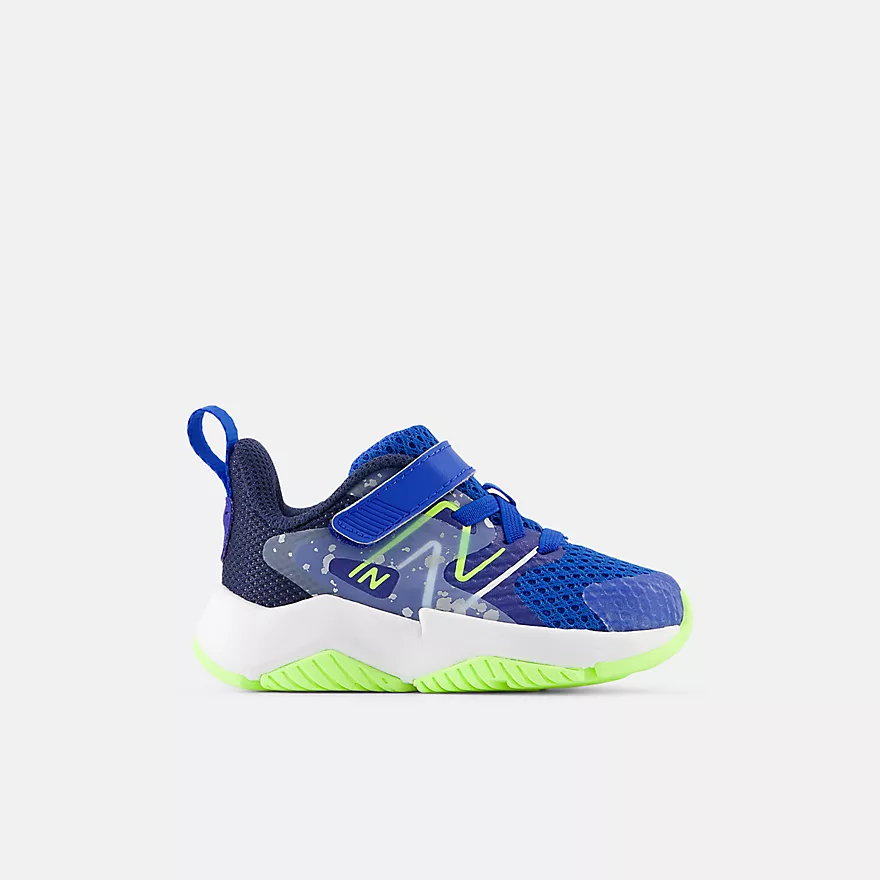






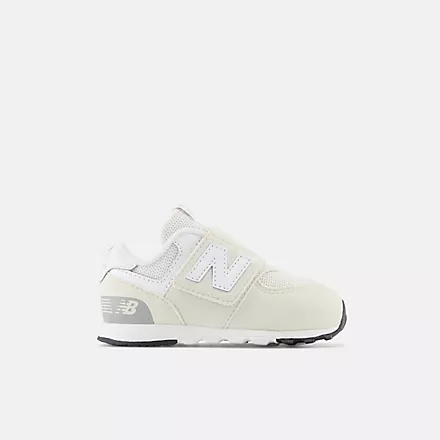









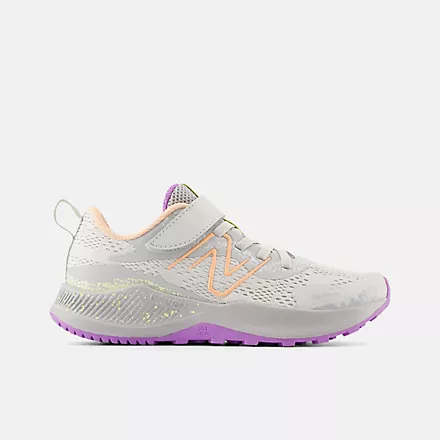




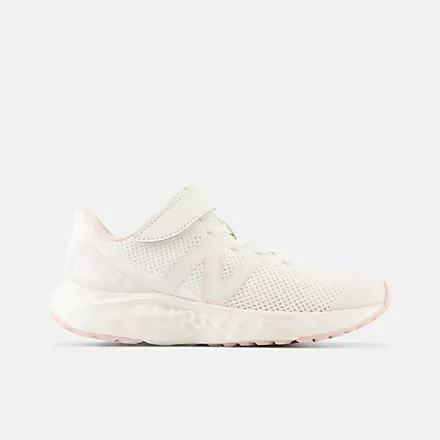

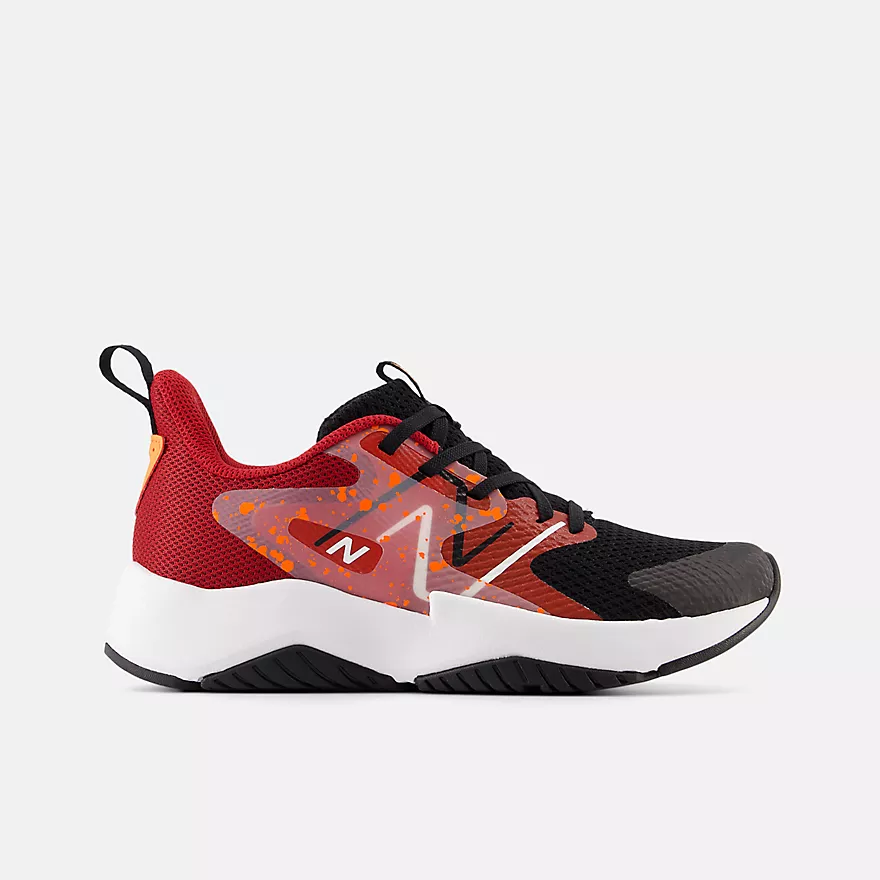
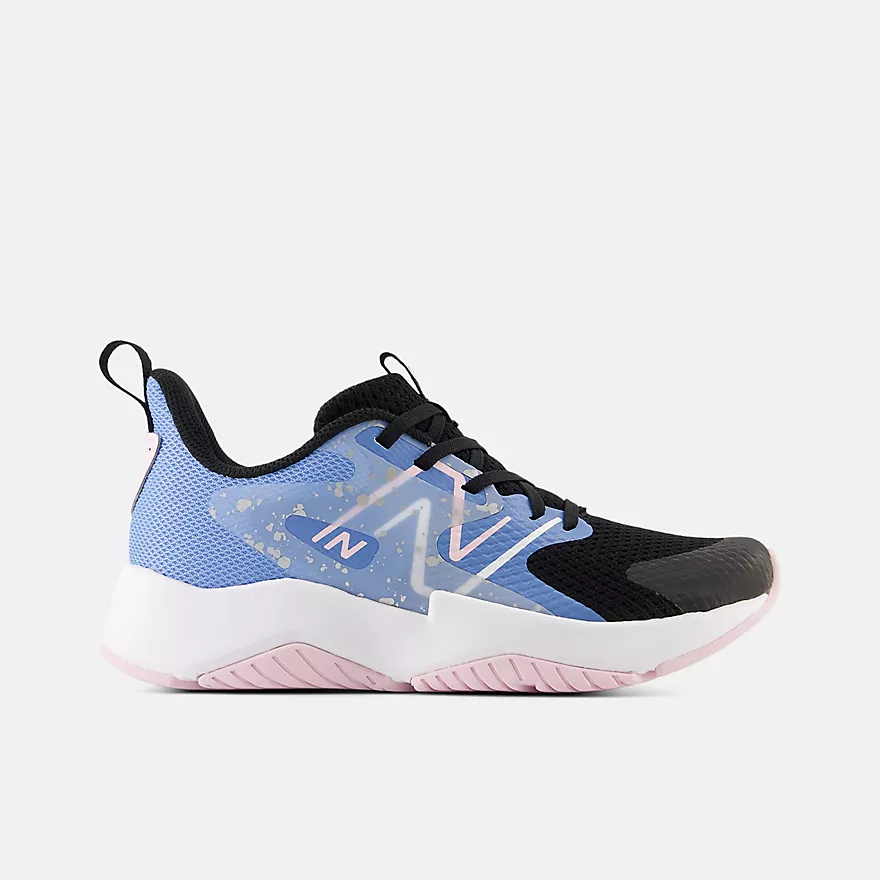




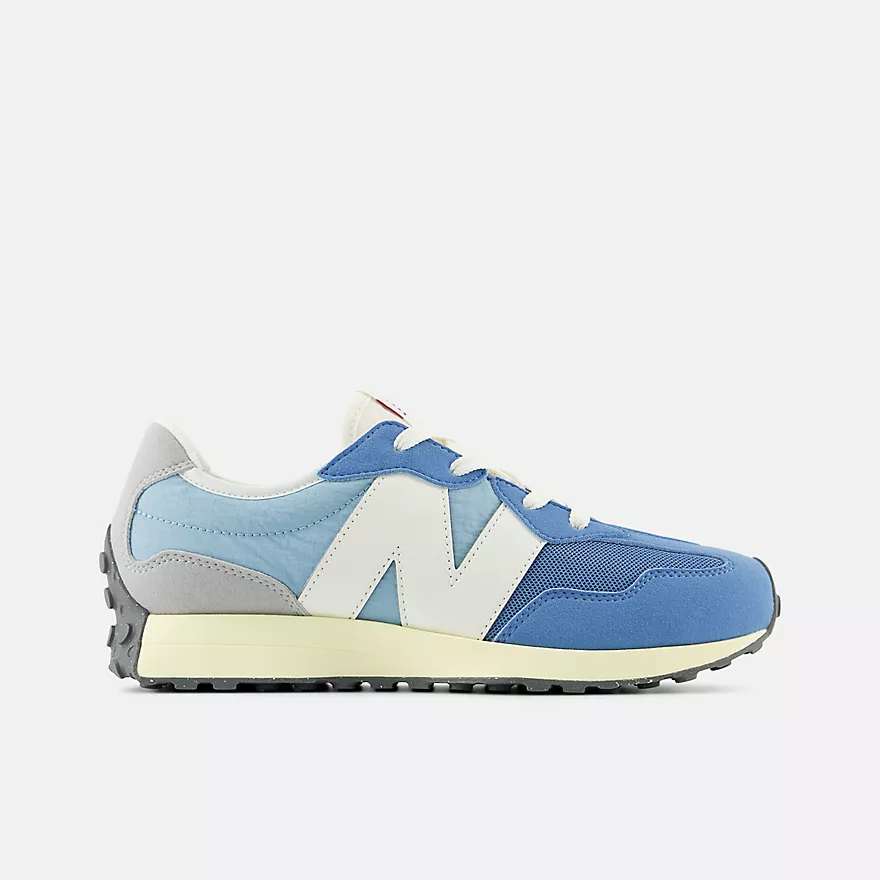

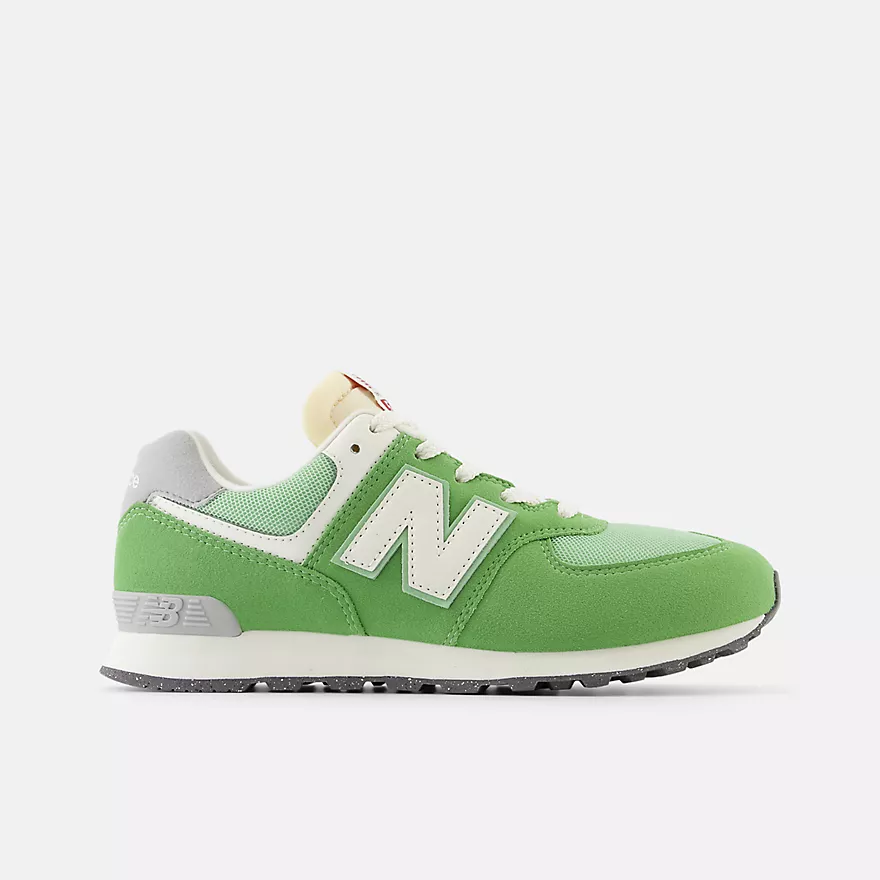

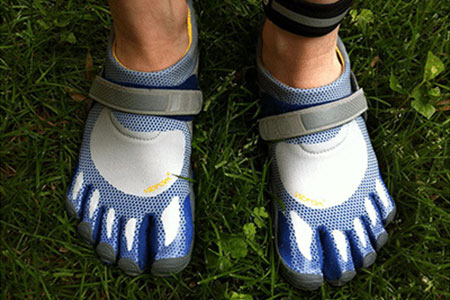
Prior to 1972, when Nike decided padding and “support” were a good idea for feet, there were next to no ankle/knee/back injuries throughout our society. All major injury rates started that following year. There are 42 muscles in the feet, many of which atrophy when we lock our feet away in these ridiculously stiff contraptions. But hey, gotta sell shoes, right? Just like hospitals need injuries to have customers and vaccines somehow miraculously increase visits to those same hospitals. Make sure to see the CDC website for the latest “expert” recommendations on shoe and vaccine safety.
Hello Chris,
Thank you for your feedback.
Children who don’t have any foot conditions don’t need extra support from their shoes. However, if a child is dealing with a foot condition or stability issues a shoe with a supportive outsole and a stable base of support can make a tremendous difference helping improve the child’s walking gait and overall posture.
My question is why do we treat the foot different than every other musculoskeletal part of the body- when it comes to strength and conditioning? For everything else, the best way to strengthen it is to use it, and not provide any sort of a “crutch.” In fact, the only time we use additional support for shoulders, elbows, kness, etc… it’s for rehabilitative purposes.
However, when it comes to feet, our society immediately slaps these ultra-supportive, rigid shoes on them- thus hindering their ability to strengthen and function the way they were designed. Children are not born with foot problems. I do not buy into this notion that foot problems are in any way hereditary. There is no scientific information that suggests so. If you look at every child’s foot (say at age 2), they all look relatively the same- with the toes being the widest part of the foot. As a society, we need to cultivate natural foot movement in our children, so they DON’T end up with foot problems down the road.
Children adapt very quickly. I’ve read a lot of comments saying that children put more stress on their feet than adults. This is false. Children in heavily-padded, rigid shoes put more stress on their feet. Barefoot or minimally-shod children do not. They adapt their steps/movement so that it doesn’t hurt when they walk, run, jump, etc…
Lastly, folks always make the comment that our ancestors did not have to walk on concrete, asphalt, (insert other man-made surface material here). This is true. That said, our ancestors had to walk, run, and jump on irregularly-shaped rocks (which are much harder than concrete & asphalt. They also played on cobblestone roads. Again, my point is that humans are able to quickly adapt their movements depending on the surface they are traversing.
In reality, minimalist footwear causes children and adults to put LESS stress on their bodies, because they have to learn how to use their bodies to reduce impact. If they don’t, IT HURTS! Modern shoes do nothing more than give us a false sense of foot strength, and allow us to push our bodies beyond the safe limit- which leads to ALL of the foot, ankle, knee, and hip problems we have today. Thank you for your article; but my children will be spending as much time barefoot as possible. And when they do have to wear shoes, it will be in minimalist footwear.
Hello Rick,
You bring up several interesting and valid points of view. I want to clarify that there is nothing wrong with children wearing minimalist shoes. However, if children have a particular foot condition such as flat feet, rolled ankles, low muscle tone, knock knees, etc, then I strongly recommend wearing supportive shoes instead of minimalist shoes.
I do disagree that children’s foot conditions are not hereditary. I have spoken with several parents who bring their children to the shoe store that I work for and they all seem to have the same foot conditions that their children have.
After fitting children’s shoes for 10 years and trying different shoe styles, I can guarantee you that supportive shoes can help improve children’s overall posture by helping them walk and run straighter.
I always recommend shoes that imitate barefoot for babies and toddlers who are learning how to walk, for healthy foot development.
Thank you for sharing your point of view, a lot of parents are going to find your information helpful.
All children are born with flat feet. Properly strengthening the foot is what develops the arch. I can probably guarantee you that the parents who bring their children to you with “flat feet” have been placing them in shoes that have inhibited their child’s feet to develop properly.
I do agree that when there IS a real foot problem present, there needs to be a transitional approach to fixing it. But relying solely on “supportive” shoes is not the solution. It will merely mask the symptoms (pain) temporarily- without actually fixing the problem (poor foot development/strength).
There have actually been studies conducted that have shown cushioned shoes do not reduce impact at all. In fact, they increase impact- because people can get away with slamming their foot into the ground without experiencing the pain of doing so. All of that shock does not get absorbed by the cushioned sole of the shoe, but rather transfers up the leg into the knees, hips, and back. While the wearer may not experience immediate pain- due to the cushioned shoes, over time they will almost always develop some sort of joint pain as a result.
I believe the best way to avoid these issues altogether is to allow the foot to develop the right way, with proper strength and flexibility. The best way to do that is to not put them in shoes that promote heel striking and don’t allow the muscles around the arch to strengthen and develop. I guarantee you that if you start wearing minimalist shoes, you will notice a reduction in impact on your body. I’ve noticed it myself; and I am a very active person. There is no logical reason why children would not experience the same benefits.
Hello Rick,
You bring up several valid points. Thank you for sharing, and I have spoken with several other parents who feel the same way. There have been also studies that show that supportive shoes do reduce the impact that our feet tale when they come in contact with the ground. I go with what has worked for the children at our store. Thank you again for sharing.
I love my minimalist and barefoot shoes! Since I started wearing them my feet and back no longer hurt! I roll my ankles out instead of in and having shoes with preformed arch supports often make me roll them out word even farther. sometimes to the point I am walking on the sides of my feet. Also even wide shoes are not shaped right for my feet and my pinky toes always feel smushed even though there is room elsewhere in the shoe. My son has similar feet to mine but he is only 7 so not sure where to head for shoes. Even though he can and does walk normally, when excited he will bounce on his toes like Tigger. suggestions?
Hi Julie,
Thank you for sharing your experience. I think I will be able to help you better if you email me pictures of your son’s feet at: [email protected]
I am a firm believer that children need sturdy and supportive shoes to minimize the impact that their feet and legs take every time they come in contact with the ground.
My son started running around a mat barefooted when he was 7 years old while training in martial arts. Due to severe allergies and asthma when he was young, this was about all of the running his was exposed to. When he started training for middle school cross country at 11 he was having problems with traditional cushioned running shoes since they are designed for more of a heal strike. We immediately purchased him minimalist shoes that allows him to run naturally like when running barefooted. It trains him to to land a lot softer on his feet and reduces the shock to his back and knees. He is now 14 and running around 30 miles a week for high school cross country always running in the 5 toes minimalist shoes. looking at his feet you can tell how developed and conditioned his feet and ankles are compared to someone running in regular running shoes, including myself and my wife. While not running he does wear traditional shoes like everyone else his age since they do offer more cushion for just walking around. I disagree with your article in stating how detrimental minimalist shoes can be to children, if anything I believe during running activities it helps promote proper foot striking techniques and strengthens the feet and ankles. The minimalist shoes get a bad rap from people who try to transition from traditional shoes with to much cushion at the heals that encourage the runners to strike heal to toe. I think having kids start off in minimalist shoes when running may even prevent future problems that you see with so many older runners who have problems with their backs and knees.
Mr. P,
Thank you for sharing your experience! I think you make a great point by saying that we should start off our kids in minimalist shoes in order for them to run naturally and prevent injuries down the road. However, when we have to transition a kid from supportive shoes to minimalist shoes, they might have a hard time adapting.
I couldn’t agree with you less. Some of the ‘problems’ these kids have may very well be from wearing ‘supportive’ shoes that didn’t allow their feet to develop properly. I tried to paste a link to an informative video from a DOCTOR of podiatry explaining proper footwear for children and the reasons for it, but was unable to. Go to youtube.com and type in Choosing healthy shoes for children Dr. Ray McClanahan and it’s the first video that comes up.
Hello Cindy,
Thank you for the informative video. My posts are based on my experience in fitting children shoes, and observing what works and what doesn’t by having children test those shoes.If I start sending you videos or articles about doctors that recommend supportive shoes, it would be a meaningless back and forth discussion, since both sides make valuable arguments.
I like to inform parents about what I have seen work through the 7 years I have been fitting children shoes. Let me clarify, there is nothing wrong with minimalist shoes, as long as the child doesn’t have any foot issues, they shouldn’t have any problems wearing them. It is not the choice I would make for my own kids. I believe that supportive, but still lightweight and flexible footwear is the way to go.
Rigid soles are bad for kids and adults alike. Work boots serve their purpose but for everyday activities and exercise everyone should be wearing barefoot/minimally padded shoes.
Hello Tylar,
Thank you for comment. Everyone’s feet are different, so what works for some people might not work for others. I always recommend staying away from minimalist shoes since they don’t provide any support for our feet, specially to our children. One of the main reasons is that kids feet impact the ground different than we do, and good, supportive shoes will minimize the impact every time their feet hit the ground, keeping their feet, legs, and back healthy.
I really think this is a very old-fashioned opinion. Minimalistic shoes with a wide toebox, flexible sole, and zero-drop are logically the best shoes. If it’s too expensive, or too difficult (for kids it’s hard to find), just buy flat sneakers. And hopefully not to narrow for your feet. I just hope you have those in your store! I was in some shoe shops this week, and most of the shoes that give more support I couldn’t even bend the sole between my hands. What a waste of energy to move your feet in these shoes. And so heavy, I just love the lightweight shoes I have. And my feet actually feel much better when I got rid of high heels.
What I really hate is the way they make kid running shoes as a copy of the adult shoes. Far too much drop. And the soles not flexible at all. An accident waiting to happen. Only the lightweight shoes of the regular brands are somewhat okay.
I don’t believe my opinion is old-fashioned at all. Just because minimalist shoes were somewhat popular not too long ago, that doesn’t mean they are the most popular shoe style. When you state that kids running shoes are a copy of adult shoes, are you aware that active children impose an enormous abuse to their feet and legs? The average child takes approximately 20,000 steps a day. I can guarantee you that is much more than most adults take on a day. And these are not regular steps, children are running, jumping, skidding. Supportive shoes will reduce the impact every time our kids’ feet hit the ground.
The bottom line is that minimalist shoes are okay as long as your child doesn’t have any foot problems. If your child is experiencing leg or foot pain, I would recommend switching to a pair of more substantial shoes soon as soon as possible.
The logic is a little weak here. Just because something (supportive shoes) fixes a problem (pain), doesn’t mean that the lack of that something caused the problem.
Now, to the extent that feet need a man-made shoe to cope with the man-made surfaces we spend all day on, I’ll buy that. The big beef I have with “supportive” shoes, is that they all have a positive heel.
Think about how you shift your body to walk downhill, and now consider that you’re walking downhill every step you take in a traditional shoe (sneakers included). Your kids are running, jumping, skipping downhill. All. Day. Long. Repetitive use injury, anyone? The most direct effect is a shortened calf muscle, causing plantar fasciitis and “fallen” arches (see, e.g. http://www.ncbi.nlm.nih.gov/pubmed/25456713).
And we fix these problems with…more supportive shoes. We HAVE developed greatly, and we SHOULD take advantage of that, but shoe manufacturers are ignoring basic biomechanics in their product lines.
Unless you can point me in the direction of a company that doesn’t put the foot in a plantar-flexed cast, I’m sticking with “minimal” shoes that let my kids’ feet move the way evolution designed them.
Thank you for your comment. When children have flat feet, and are experiencing leg or foot pain, good supportive shoes will strengthen their feet, legs, and backs. Why do I say that a child who is flat footed and is experiencing feet or leg pain needs a more supportive shoe? Because wearing a good, supportive shoe will allow the child to walk straighter and relieve the pain from the muscles by redistributing body balance.
I don’t like to generalize, but in most cases, if a child is having leg or foot pain, that might be due to them not wearing the right type of shoe. The exception will be if they are flat footed (this is believed to be hereditary) or they might not be stretching enough (sometimes all they need is to start stretching regularly).Do not underestimate the importance of stretching; this can significantly relieve the leg pain that your child might be experiencing. If your child does stretch regularly and the pain persists then it might be a sign that your child needs extra support.
Shoe manufacturers have tried minimalist shoes, and some of them have had more success than others. I don’t want to point you in any particular direction, my goal is to inform the parents based on my experience in order for them to make the most informative decision, since there is a myriad of options when it comes to children’s footwear. Thank you again for stopping by.
I agree with you about the positive heel. I was barefoot most of the time when I was a kids running jumping ect. I started wearing traditional positive heels when I started running track. I developed knee problems. I used to hike in moccasins when I started working at a camping store I got traditional positive heel hiking shoes not only did I trip more but my knee pain returned. I switched to zero drop and haven’t had a problem since. I slipped on an old pair traditional shoes to bring the garbage out in the mud and I felt like I was walking on a hill. I’ll stick with zero drop shoes for my kids.
another point in the article that’s not quite correct about companies offering barefoot shoes. It is the parents who want padding and support and theyre the ones making the buying choices. My kids have always worn barefoot shoes if you have them try on a positive heel highly padded shoe and a barefoot shoe they’ll pick the barefoot. They notice the akward body position and lack of ground feel that the positive heel creates.
The damage caused by a positive heel is not addressed at all here
Heather,
Thank you for stopping by and sharing your experiences. In regards to your first point, what might have worked for you, might not work for other people. I have been working at a children shoe store for over 5 years, and when a child is experiencing foot or leg pain, the physical therapist wants the child fitted in more of a shoe (support), rather than less (minimalist or less structured shoes). These are children who were experiencing pain and when we follow up with them, they tell us the pain disappeared. We see hundreds of kids a month, and what has been working for this children is more supportive shoes, and sometimes, they also need an orthotic. This is what I believe in since I have seen the positive impact that good supportive shoes can have in kids’ feet and legs. However, what works for some children might not work for others. It is important to try different things until the issue is resolved.
You also mentioned that the article is not correct about shoe companies offering barefoot shoes, what exactly do you mean here? I am assuming if there is a lack of demand, companies are not going to waste their money making a product parents don’t want to buy.
So over the thousands of years of human development, the vast majority of which feet were unshod or minimally shod, all those children who were running, jumping, playing, no doubt far more than any modern child could dream of, untold damage was being caused to their bodies? And only in the last few hundred years have humans, and especially children, been able to properly physically function?
Is it then the case that people from cultures that still wear little or no footwear, are doing untold damage to their bodies, and are in need of treatment and nice ‘supportive’ shoes?
Hello Richards,
Thank you for stopping by. The damage that is caused by not wearing supportive shoes can range from the feet, to the legs, to the back of our bodies. I am sure that children were always able to function fine, but as human have developed greatly in all areas, due to research and great findings, we should take advantage of that and incorporate the best possible way. I have spoken with several parents that told me they wish they have worn good shoes when they were younger because they now suffer from lower back problems. This is not the case for everybody. I do believe that children should wear good supportive shoes in order to prevent future problems.
Totally agree with you Richards – latest science confirms the same too.
My 12 year old son has been wearing minimalist shoes for over 5 years now and plays sport at a national level, trains nearly every day and is one of the few that has suffered no foot; leg, hip or lower back injuries to date. (Sport is tennis which has high demand on the body with much lateral movement). This is thanks to his physiotherapist uncle who suggested early on that we go down this path. We are thankful indeed for that advice. Think about all the pro players including Murray who have to wear ankle braces – we put that down to the fact that most tennis shoes are extremely rigid; have heaps of cushioning resulting in reduced feedback to brain that leads to many more rolled ankles each week and other issues. Anyway we will continue on our journey with our son wearing minimalist as we are sure after this many years his legs are conditioned extremely well and now have far less chance for injury than if we had gone with the newly traditional path and falling victim to all of the hype of marketing that cushioning and support is required. We disagree.
Yuli,
I would love to read some of the sources that confirm what Richards said. Could it be possible that what worked for your child might not work for other children? I disagree that good, supportive shoes are all hype of marketing, since they have been around for a really long time. I can also mention thousands of examples of children who were having foot pain due to wearing non supportive shoes, and now they are living healthy lifestyles due to wearing more supportive shoes.
I would just like to say that all of barefoot ancestors did not run, walk, jump, or anything else on smooth flat concrete all day or smooth, flat, sometimes slippery tile. Even though I wear and love minimalist shoes. when I know I have to stand on concrete all day I will sometimes get my old shoes out for the extra cushion.
That’s a good point you make Julie! While I am a firm believer of supportive shoes, I understand that what might work for one person might not work for the other.
I should have come across this article years ago OR you should have written this years ago! (just kidding)
I am now 63 years old now and this info is good to know. So next time when I buy the shoe for my grandson, I know what to look for.
My grandson will be 3 this July and his parent has been fitting him with Croc brand shoe. It looks horrid to me, but he loves it esp. those with the superhero designs.
I also notice Croc shoes are wider at the front and with the loose fitting upfront, is this OK?
Children love Crocs because of how wide and roomy they feel.However, Crocs are only meant to be worn for going to the swimming pool and coming back kinda thing. It would be better if you can get your grandson to wear a good supportive shoe, specially when he is running around and playing. I created a post about Crocs, which maybe you can show to your son: Crocs For Children – Is Your Child In Danger When Wearing Crocs?
I am certainly not a minimalist when it comes to kids shoes. They need support and cushion. Yes, I can see the benefit when it comes to learning how to walk, but once they are walking I cannot see the point. Playing can be dangerous without some cushion. Ever step on a lego without cushion?
If a child is wearing a minimalist shoe and steps on a lego or any other type of sharp material, his or her feet might get hurt. A good supportive shoe provides so much more than just protection!A good supportive shoe will:
Help relieve the stress from running, jumping and playing that the kid imposes to his or her feet, back, and legs.
Prevent injuries (not just from stepping on a lego, but injuries such as twisting an ankle!)
Realign your child’s body posture helping him or her walk straighter
Absorb shock absorption!
Help with the child’s stability
Help stabilize the ankle
Very interesting article! Never really thought about minimalist shoes for kids.
I’ve personally experienced some achilles tendon pain a day after after running barefoot on grass for about an hour.
Although I personally think that minimalist shoes have its place and benefits, I agree that the growing feet of children require protection from padded shoes; especially with the amount of jumping and landing and skipping they do.
Wing,
I do NOT recommend minimalist shoes for children, only for babies who are learning how to walk. Every time that children are jumping and landing on their feet, the impact they feel on their feet travels all the way through their legs to their spine. That is why it is so important for them to wear good supportive shoes, since these reduce the impact every time they are putting stress on their feet or legs.
Juan! There is some very useful advice on this website. Getting my children to wear socks with their sneakers is a challenge. Now I can read out your words and they’ll listen to an expert……after all – what does mummy know? One thing I’d like your opinion on, are flip flops Ok to wear day to day? In the summer, they like slipping on a pair and wear them all day. But I’m not sure if there’s enough support. Thanks for your advice.
Maggie,
Are you having trouble getting your kids to listen to you :)? Sometimes children will listen and respond better to certain things that do not come from the parents. For example, we have a shoe tying class at the shoe store I work for, and most children leave the store learning how to tie their shoes. The parents are amazed about how well and fast they learned, even after trying several times at home.Your children should NOT wear flip flops more than 4 to 5 hours per day. There is not enough support. Flip flops are meant to go to the swimming and come back sort of thing.
I agree with you that the price shouldn’t be too decisive factor when searching for the right shoes for the children. Still, I always want to find the shoes that don’t cost too much because the price doesn’t always decide the quality. There may be $20 shoes with the same or even with the better quality than $200 shoes. It depends on the brand.
Roope,
I would say with confidence that you can find a good supportive shoe for $40. The shoe prices vary depending on brand, style, and features. I agree with you 100% that price does not dictate quality!
I have a love for minimalism and am actually looking for a gift for my niece.
After I read your post, I wonder what a minimalist shoes really means though? Shoes that imitate bare food? That’s a pretty nice idea to me.
At the end of the day, like anyone else, kids should be able to wear what they like minimalist or not.
Thanks for sharing!
Cheers,
Anh
You are correct, minimalist shoes imitate barefoot. These type of shoes are great for children who are learning how to walk, not for older children who are already walking. Children impose an enormous amount of stress to their feet and legs, and a minimalist shoe will not provide them with the support they need when they are running and playing.
I have been researching this topic for a couple of years. I have changed to minimalist shoes because of foot problems caused by “good quality” shoes you are recommending. Your article has not addressed this reality. Why would there be a minimalist shoe if other shoes posed no problems? The only problem I have been able to discover with minimalist shoes, is when people jump right into them instead of following the direction of slowly getting used to them. I now have great balance, more developed foot and leg muscles and better blood circulation in my feet. Your article makes it sound like the feet we are born with are not strong enough to get us past our first years of walking. I would say that if a child is heavily involved with a sport that requires more abuse on their foot than normal kid activity, then they should probably get a more supportive shoe. I believe that God gave us incredible feet, but if we choose to abuse them, then we need to find a way to support them during that abusive activity.
Hello Maria,
You make several valuable observations! I have spoken with several parents who love wearing minimalist shoes. If you have been researching this topic for a couple of years, you might have noticed how the selection for minimalist shoes for kids’have dropped considerably. Remember that what might have worked for you might or might not work for another person. What I write in my posts is what I have actually seen and experienced from fitting thousands of children’s in different types of shoes. I am not a doctor, but I have worked very closely with physical and ocuppational therapists to find the perfect pair of shoes for each particular child.
While God did provide us with incredible feet, some of us have been more fortunate than others. Remember that our feet are the foundation for our entire body! Children don’t choose to abuse their feet, they just tend to run around and imposs an enormous amount of stress to their feet and legs!
Thank you for sharing!
Hey Juan Pablo! you are working for the shoe store, so it is in your best interest to sell shoes to people, and tell that minimalist shoes is all a lie. I switched to minimalist shoes 3 years ago, and don’t have low back pain anymore. The only problem with minimalist shoes is that super hard to find good looking minimalist shoes. that’s all! you are right – it takes a long time to develop a child foot. It takes 6 years to finish forming an arch. When you put a child in a supportive shoe, you hinder arches natural development, and make feet week. All supportive shoes are for the week feet. And the only thing that makes feet week, is the presence of shoes. Humans didn’t wear shoes for millenias, it’s only the last couple hundred years, and these last couple hundred years changed a lot about our bodies, and not in good way. You are talking about shock absorption – we have arches for that. You should read this woman’s blog, who is a biomechanist, and who actually studies how physical loads, and movement, and presense/absense of shoes affect human bodies. Her name is Katy Bowman, google her. It will bring your understanding of why people choose minimal footwear on a whole new level
Olena,
You are correct that it is in my best interest to sell shoes, but why would I complain about minimalist shoes when we could be selling them? We used to carry several styles of minimalist shoes for kids’ and we did awful with them, because parents didn’t want minimalist shoes for their kids’. I think in your comment you are referring to minimalist shoes for adults and not for kids’. I don’t have any experience about minimalist shoes for adults, I only write about children’s shoes, since I have been working for a specialized children’s shoe store for over 7 years now.
When you say that when you put a child in a supportive shoe you hinder their arches natural development, that is all a myth. I wish you will provide me with some evidence to back that up and I am sure you will find some, just like I will find some evidence stating the opposite. I have seen the positive impact that good, supportive shoes have in children by fitting them in shoes (both supportive and minimalist) and observing how they react to them.
I wrote in my post that children with foot problems shouldn’t wear minimalist shoes. A child that is flat footed doesn’t have arches, meaning that they WILL need a good, supportive shoe to reduce the impact every time their feet impact the ground (shock absorption).I am sure Katy Bowman did plenty of research on the subject, My experience comes from actually fitting the kids’ in shoes and observing how their feet and legs react. Thank you for your valuable comment.